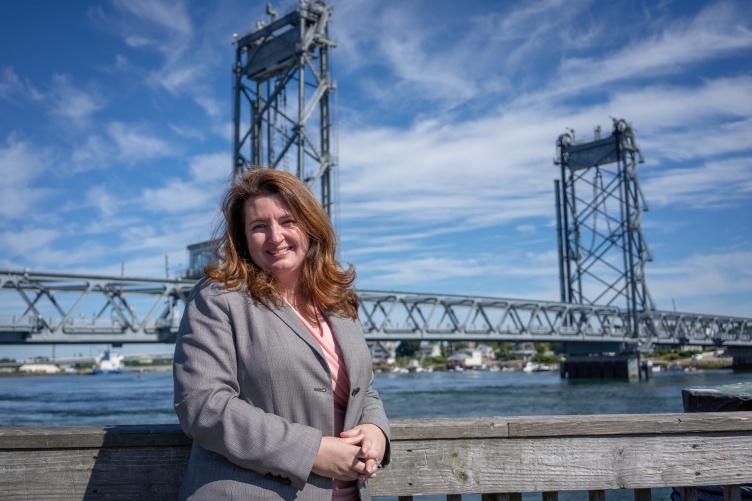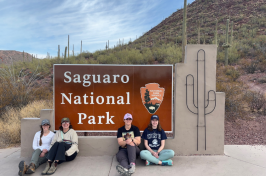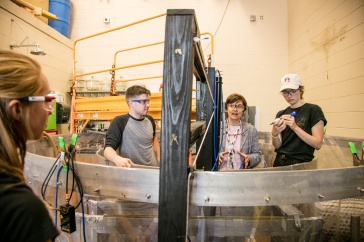
UNH civil and environmental engineering professor Erin Bell is a bridge expert and principal investigator of the Living Bridge Project on the Memorial Bridge between Portsmouth, N.H. and Kittery, Maine.
In the aftermath of the collapse of Baltimore’s Francis Scott Key Bridge in the early morning of March 26, authorities are trying to figure out how the collision of the heavily traveled structure with a container cargo ship brought it crumbling down into the Patapsco River.
UNH bridge construction expert Erin Bell, chair and professor of civil and environmental engineering at UNH, also wonders what went wrong. She points to the structure of the bridge as a possible weakness.
“Bridge collapses of this level are rare, especially with a major bridge like the Francis Scott Key Bridge that services one of the largest ports in the country,” Bell says. She notes that the bridge, built in 1977, has a continuous through truss construction. “That means the truss, a structure or beam of connected elements, spans over multiple supports — and often requires less materials that work together in an integral fashion to resist load. This interdependent structural form could have been a contributor to the collapse.”
Bell notes that vessel collision procedures were improved after the collapse of Tampa Bay’s Sunshine Skyway Bridge in 1980, when it was hit by a 20-ton freighter that sent a 1,200-foot section of the bridge into Tampa Bay, killing 35. She questions whether a retrofit was done on the Baltimore bridge, which was built before the Sunshine Skyway Bridge.
Bell is the principal investigator of UNH’s Living Bridge Project, a unique living laboratory on the (still standing) Memorial Bridge between New Hampshire and Maine. Outfitted with data sensors, the bridge has been transformed into a self-reporting “smart” bridge that captures a range of information from the health of the span to the environment around it— including such things as structural performance, wind patterns, tidal current, water turbidity and fish migration patterns.
-
Written By:
Robbin Ray ’82 | UNH Marketing | robbin.ray@unh.edu | 603-862-4864
-
Compiled By:
Beth Potier | UNH Marketing | beth.potier@unh.edu | 2-1566
















































